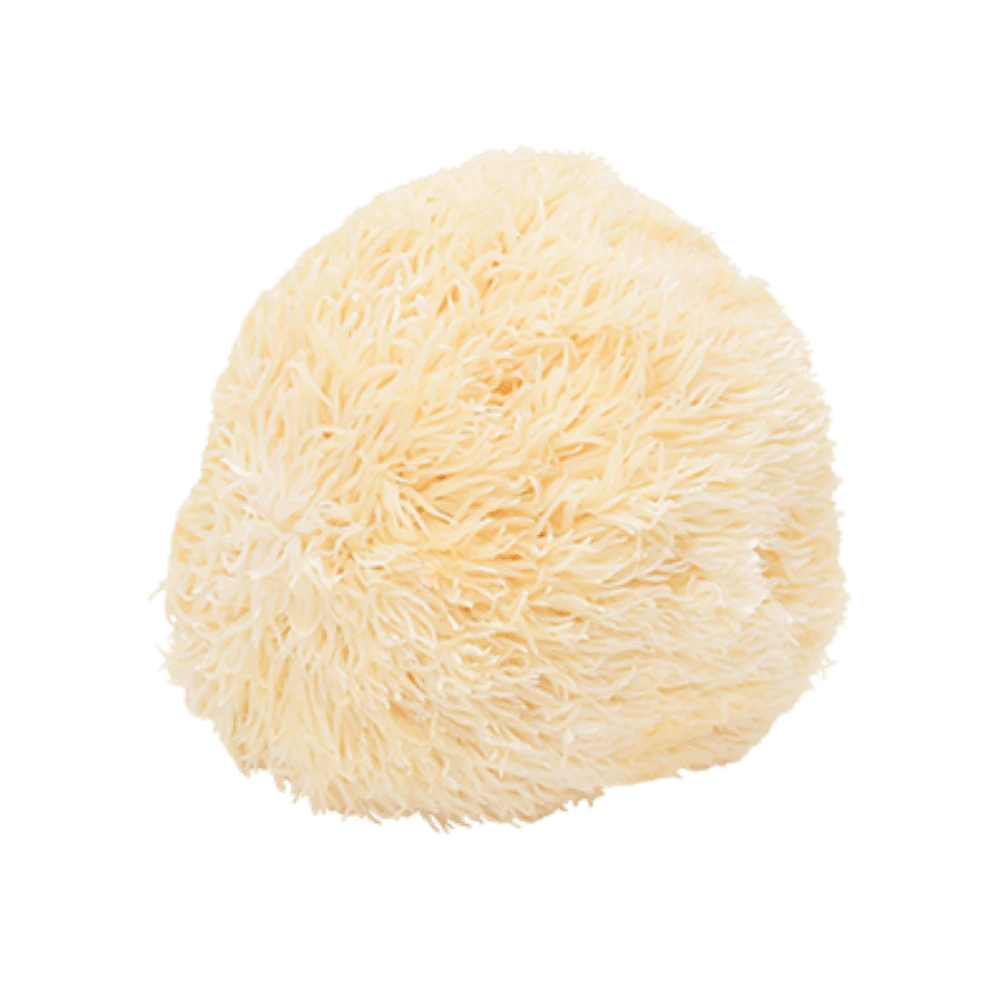
Lion's mane
Lion's mane, a type of mushroom, is believed to alleviate menopausal symptoms due to its potential to regulate hormones and reduce inflammation, supported by studies showing its effectiveness in relieving menopausal symptoms.
-

Brain Health
-

Liver Health
-

Mood Boost
-

Cardiovascular Health
-

Cognitive Function
Collapsible content
Read Studies
Kushairi N, Phan CW, Sabaratnam V, David P, Naidu M. Lion’s Mane Mushroom, Hericium erinaceus (Bull.: Fr.) Pers. Suppresses H₂O₂-Induced Oxidative Damage and LPS-Induced Inflammation in HT22 Hippocampal Neurons and BV2 Microglia. Antioxidants (Basel). 2019;8(8):261. doi:10.3390/antiox8080261.
Publication Date: "Published: 1 August 2019."
Peer Reviewed: Yes.
Study Design: "In this study, hot water (HE-HWA) and ethanolic (HE-ETH) extracts of the basidiocarps of Hericium erinaceus mushroom were investigated for their neuroprotective and anti-inflammatory activities."
Methodology: Neurons were treated with H2O2 or LPS, extracts were tested for neuroprotection and anti-inflammation, antioxidant levels were measured.
Sample Size: "All values presented correspond to mean ± SD of three independent experiments (n = 3)."
Controls Used: "Control considered as 100% cell viability."
Dose Used: "HE-ETH at 100 µg/mL, 200 µg/mL, and 400 µg/mL."
Statistical Significance Declared: "p < 0.0001 for viability of H2O2-treated neurons; p < 0.05 for ROS reduction; p < 0.0001 for ATP production."
Adverse Events: No adverse events reported.
Conflict of Interest: "The authors declare no conflict of interest."
Tsai-Teng T, Chin-Chu C, Li-Ya L, et al. Erinacine A-enriched Hericium erinaceus mycelium ameliorates Alzheimer's disease-related pathologies in APPswe/PS1dE9 transgenic mice. J Biomed Sci. 2016;23(1):49. doi:10.1186/s12929-016-0266-z.
Publication Date: "Published online 2016 Jun 27."
Peer Reviewed: Yes.
Study Design: "APPswe/PS1dE9 transgenic mouse model of Alzheimer’s disease."
Methodology: Mice were fed with HE-My or HE-Et, and behavior, biochemical changes, and plaque burden were measured.
Sample Size: "Vehicle (Veh, n = 6), HE-Et (n = 5), HE-My (n = 6)."
Controls Used: "Vehicle-treated mice."
Dose Used: "300 mg/kg/day HE-My or HE-Et for 30 days."
Statistical Significance Declared: "*p < 0.05" and "**p < 0.01" for amyloid plaques and IDE expression.
Adverse Events: "No obvious side effect."
Conflict of Interest: "The authors declare that they have no competing interests."
Zhang J, An S, Hu W, et al. The neuroprotective properties of Hericium erinaceus in glutamate-damaged differentiated PC12 cells and an Alzheimer’s disease mouse model. Int J Mol Sci. 2016;17(11):1810. doi:10.3390/ijms17111810.
Publication Date: "Published online 2016 Nov 1."
Peer Reviewed: Yes.
Study Design: "An l-glutamic acid (l-Glu)-induced differentiated PC12 (DPC12) cellular apoptosis model and an AlCl3 combined with d-galactose-induced Alzheimer’s disease mouse model."
Methodology: PC12 cells treated with HE before glutamate exposure, Alzheimer’s mice treated with HE, tests on movement and memory performed.
Sample Size: "Data are expressed as mean ± SD (n = 10)" for mice; "n = 6" for cell experiments.
Controls Used: "CTRL: Non-treated cells."
Dose Used: "50 and 100 µg/mL of HE for 24 and 48 h" for PC12 cells; "0.3 g/kg, 1 g/kg, and 3 g/kg of HE for 28 days" for mice.
Statistical Significance Declared: "*p < 0.05 and **p < 0.01 vs. CTRL."
Adverse Events: "HE had no significant effect on body weight."
Conflict of Interest: "The authors declare no conflict of interest."
Cheng JH, Tsai CL, Lien YY, Lee MS, Sheu SC. High molecular weight of polysaccharides from Hericium erinaceus against amyloid beta-induced neurotoxicity. BMC Complement Altern Med. 2016;16:170. doi:10.1186/s12906-016-1154-5.
Publication Date: "Published online 2016 Jun 7."
Peer Reviewed: Yes.
Study Design: "Evaluated their protective effects on amyloid beta (Aβ)-induced neurotoxicity in rat pheochromocytoma PC12 cells."
Methodology: PC12 cells treated with HEPS, followed by Aβ treatment; antioxidant and neuroprotective effects measured by MTT assay, ROS, and MMP analysis.
Sample Size: "n = 6" for cell viability; "n = 3" for scavenging assay.
Controls Used: "RPMI-1640 complete medium containing 10 % horse serum and 5 % fetal bovine serum is indicated as N+."
Dose Used: "250 μg/mL of HEPS" for PC12 cells.
Statistical Significance Declared: "All columns were significantly different (p < 0.05)."
Adverse Events: "HEPS was harmless to PC12 cells."
Conflict of Interest: "The authors declare that they have no competing interests."
Li IC, Chang HH, Lin CH, et al. Prevention of early Alzheimer’s disease by Erinacine A-enriched Hericium erinaceus mycelia: pilot double-blind placebo-controlled study. Front Aging Neurosci. 2020;12:155. doi:10.3389/fnagi.2020.00155.
Publication Date: "Published online 2020 Jun 3."
Peer Reviewed: Yes.
Study Design: "A 1-year, double-blind, randomized, placebo-controlled, fixed-dose intervention pilot trial."
Methodology: Participants randomized into two groups received either three 350 mg EAHE capsules or placebo daily for 49 weeks; cognitive assessments, ophthalmic exams, blood biomarker analysis, and MRI scans were performed.
Sample Size: "Forty-nine participants were randomized, and the data from 41 study participants were analyzed."
Controls Used: "Placebo capsules with meals."
Dose Used: "Three 350 mg/capsules containing 5 mg/g erinacine A per day."
Statistical Significance Declared: "Significant improvement in MMSE (p = 0.035); significant IADL score difference (p = 0.012)."
Adverse Events: "Four subjects dropped out due to abdominal discomfort, nausea, and skin rash."
Conflict of Interest: "Grape King Bio Inc., provided support in the form of salaries for the authors but did not have any additional role in the study design, data collection, or analysis."





